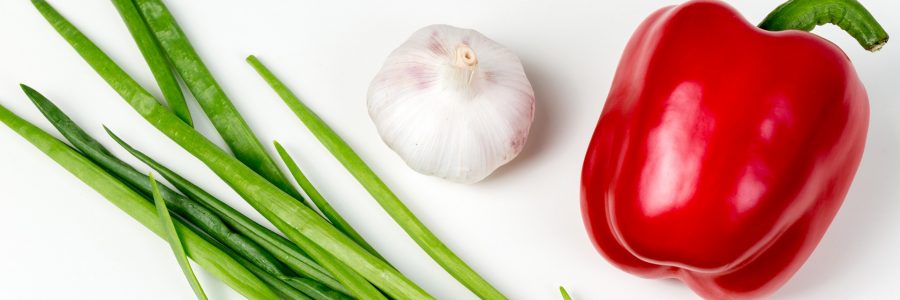Hello friends! Last week, I gave you three of my favorite tips to help you in your efforts to eat a real, whole foods. After you have made the commitment, stocked your pantry and freezer, and made a list of a few quick and easy meals you can be prepared to pull together anytime the need arises, what next?
Tip #4 is to plan ahead! Planning your meals and snacks for the week is key to your success.
You might be ready to tune out here, because there are dozens, if not hundreds, of articles and services to help you become a better meal planner. I get it. They all sound amazing and if you use one of these plans or services your grocery budget, sanity, and health will all thank you. But I don’t use any of them either. I’m honestly not the best meal planner out there.
But that doesn’t mean I don’t plan. Planning ahead and being prepared for different contingencies is actually vital to your whole food nutrition efforts. My plan is typically just a rough list of options of the meals and dishes I want to make that week. My list is often only in my head or scribbled on a pad of paper I may or may no be able to find when I next need it. When I’m really on the ball I make the list in Notes on my iPhone so I can look at it for a reminder at the grocery store, in the pick-up line at school or when I’m getting organized for my day.
Sometime before my weekly grocery shopping trip I think about our schedule for the week. Which evenings will we all be home to eat dinner together? What evenings will I need something really easy so the kids can eat an early dinner before they head off to sports and activities? What days will I have time to cook and what days do I need to rely on leftovers or something I can pull together really quickly?
Then I make a list of the things I want to make for the week (again often just in my head). My list is usually only 2-3 meals or dishes but they are almost always something that will provides leftovers for a second meal or that I can easily morph into a second (or third) meal for the remaining days of the week. On the days when I have time, I love to cook. But its also a really nice treat to have leftovers and know I don’t have to cook three meals a day. Every. Single. Day.
My shopping list is always in the Notes on my phone. It remains pretty constant–all of the fresh produce and staples we use every week for breakfasts, lunches, my quick and easy dinners and snacks–with just a few additions depending on the other specific dishes I choose to make for the week.
Tip #5 goes right along with planning ahead. When you cook, always. always, always make enough for multiple meals.
I almost always double or triple the recipe for anything I cook. Sometimes I can get an entire second dinner out of one meal. Other times the leftovers might be lunch for me and our 2 yr old all week. Or it might be a quick and easy thing to re-heat on nights with evening activities. Or I might just double or triple the most time intensive part of the meal (like slow cooker beans for taco night or our favorite homemade pasta sauce) and then freeze what’s left or re-purpose is for another meal.
A few years ago I read a book called An Everlasting Meal: Cooking with Economy and Grace. Its a series of essays, part cookbook and part mediation on cooking and eating. I honestly am not even sure I finished the book, I think I got distracted and never got back to it. But I appreciated the author’s philosophy. For her cooking is more of an intuitive flowing art form than any specific dish or recipe. Her essays focus on feeding the people around her without any waste … “summoning meals from the humblest ingredients”, using every bit of an animal, fruit or vegetable and especially the belief that “the best meals rely on the ends of the meals that came before them.”
A couple of examples of how I might do this on a given week:
This week I’m planning to make tacos and I always make a huge batch of black beans in the slow cooker. I usually have enough leftovers to put tacos or taco salad in school lunches the next day and for one other quick dinner on a night the kids have to eat early and get to soccer and ballet. Even after two dinners and lunches, I’ll still have plenty of beans left for another meal or two. If I don’t have time to use them, I’ll put them in the freezer to use another week. But most likely, another day this week I’ll make our version of Chipotle style burrito bowls, black bean wraps, or Mexican pizzas on sprouted wheat or brown rice tortillas toasted in the oven. With the beans made, all 3 of these meals are pretty quick and easy options that I can pull together without too much advance prep or time in the kitchen.
I also love to roast whole chickens. I always roast 2 at a time and we usually get 2 complete meals out of the chickens, often with some left for lunches. Then I make stock with the bones and I’ll keep the stock and remaining scraps of meat in the refrigerator to make another meal (usually soup or risotto) or freeze them to use later.
The more you cook, the more food you will have to work with and the more flexibility you will have in planning for the rest of the week. I know, I’m a genius, huh? But it’s so true!! I love having a start to a new meal (or two) already made and in the refrigerator. It makes the rest of the week so much smoother and I don’t have to start fresh every single day thinking, “Oh man, what am I going to make for dinner tonight?”
Once you get in the habit of cooking this way, it becomes so much easier and, over time, it just becomes a way of life.
Tip #6 — Make fruits and vegetables the center of every snack and meal.
Fruits and veggies are the best, most nutrient dense thing you can possibly eat. Low in calories and high in health promoting micronutrients–vitamins, antioxidants, live digestive enzymes and phytonutrients!

Did you know one apple contains approximately 10,000 different phytonutrients? And these are just the ones scientist have identified! All of these phytonutrients work together synergistically in ways we don’t even fully understand, to keep our bodies strong and healthy. And every fruit and vegetable has a similarly long list of different but equally important phytonutrients.
Most fruits and vegetables actually retain more health benefits when you eat them raw. What could be quicker or easier than that? No cooking required!
Every week I buy a mountain of fresh produce: lettuce and other greens, 4 bags of organic apples, 4 bunches of bananas, berries, a bag of clementines & lemons, carrots, grape tomatoes, celery, bell peppers, broccoli, cauliflower, Brussels sprouts, cucumbers and usually a few other things.
I make a giant green smoothie for breakfast almost every morning. This kids have a serving of fruit with breakfast every day. They usually take a piece of fruit to school for their morning snack. They have at least one fruit and one vegetable in their lunch boxes. They each eat an apple every single day after school. We have a green salad every night with dinner and usually one other vegetable as well. I often have a big green salad for my lunch and again for dinner. I always have hummus and guacamole in my refrigerator for snacking on with raw veggies and for an easy on the go snack.
Try to meet the recommended 9-13 servings of fruits and veggies every day!
#7 Invest in a second refrigerator and/or a deep freeze.
One of my good friends who is eats very healthfully and is raising a real food family recently sent me a picture of her nearly empty cupboard that used to be filled with packaged foods. Now, she said, it’s her fridge that is ooverflowing with fresh produce instead.
When you change your way of cooking and eating and begin eating a lot more fresh fruits and vegetables, you may need a bbigger refrigerator. Especially if you’re feeding a family. If that isn’t an option for you (it isn’t for us) consider investing in a second refrigerator for the basement or garage to serve as overflow for your freezer and to store all of that beautiful, amazing, health promoting produce you’re going to be eating. I’m not sure how we survived without ours!
Whether you are an expert meal planner with a complete weekly or monthly calendar of every meal and snack laid out in advance or more like me … making a rough weekly plan in your head, knowing you will almost certainly deviate from it … just make sure you have a plan! Focus on eating more fruits and vegetables. Figure out what works for your schedule and household and over time, with a little effort, a real whole food diet will become a natural, normal part of life.
Join me in making whole food a priority in your life! Your health will thank you!
XOXO,
Kristi
PS. If you missed Making Whole Food Nutrition a Priority, Part 1, click here to read it now! And make sure to follow Nourished for Life on Facebook for all of the latest news and more healthy living information.




